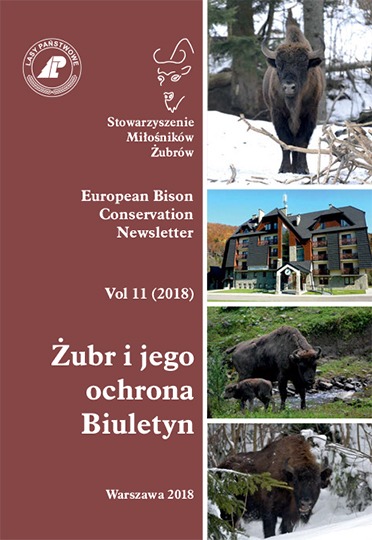Where wisents of Bieszczady spend their non-active periods?
Keywords:
European bison, the Carpathians, activity, habitatsAbstract
Analysed were habitat conditions (categories of ground cover according to Corine classification) of sites where wisents of Bieszczady were recorded during non-active periods of their time budget. Considered habitat categories included: forest, non-forested areas, as well as deciduous, coniferous and mixed forest stands. Data were collected between 2001–2017 separately for vegetative and winter seasons, within the home range of wisent population in Bieszczady. Absolute majority of such records (about 90%) came from forested areas. Outside of the forest, non-active wisents were observed twice more frequently in winter than in summer. Within the forest, the least frequently non-active wisents were recorded in deciduous stands (about 20%), and the most frequently in mixed stands (about 50%). Habitat preference estimated with Ivlev’s coefficient shows, that the forested area was slightly preferred by wisents for their non-active periods while non forested area was strongly avoided then. Among categories of forest stands, most strongly preferred were coniferous stands in vegetative seasons and mixed stands in winter. Deciduous stands were slightly avoided in both seasons.
Downloads
Published
How to Cite
Issue
Section
Categories
License
Copyright (c) 2018 Kajetan Perzanowski, Maciej Januszczak

This work is licensed under a Creative Commons Attribution 4.0 International License.





